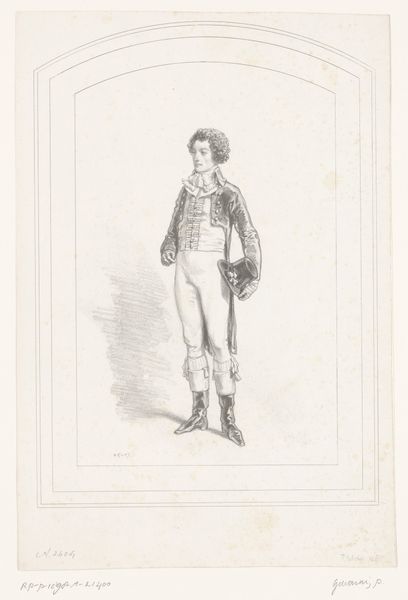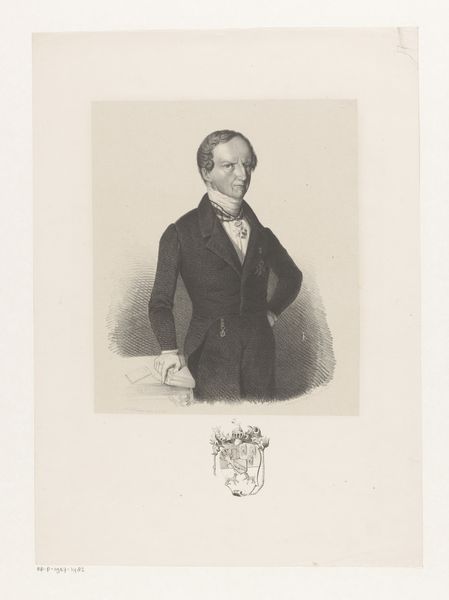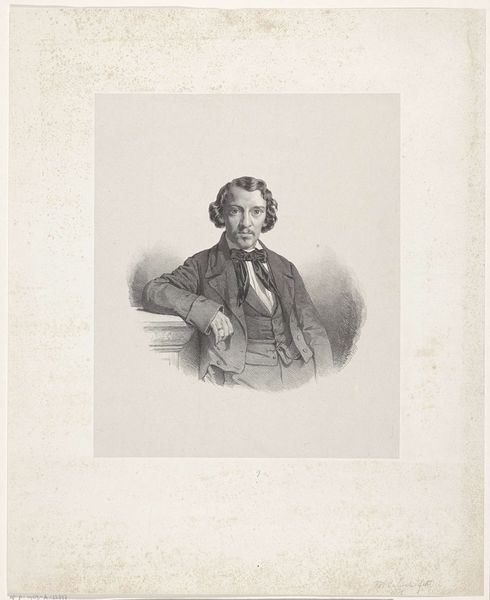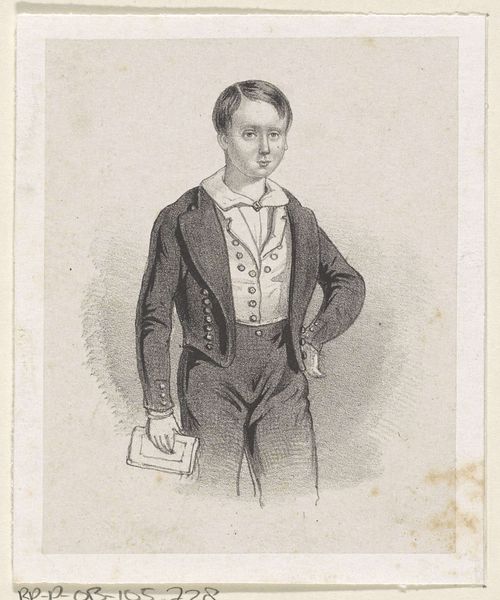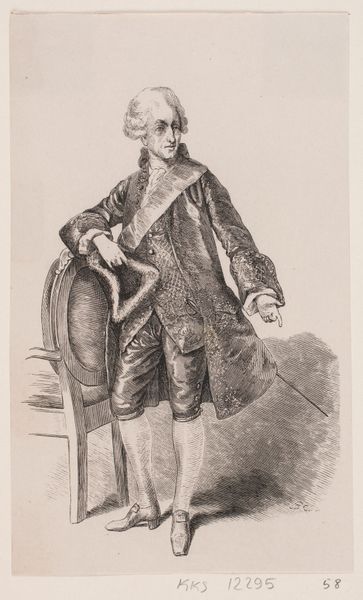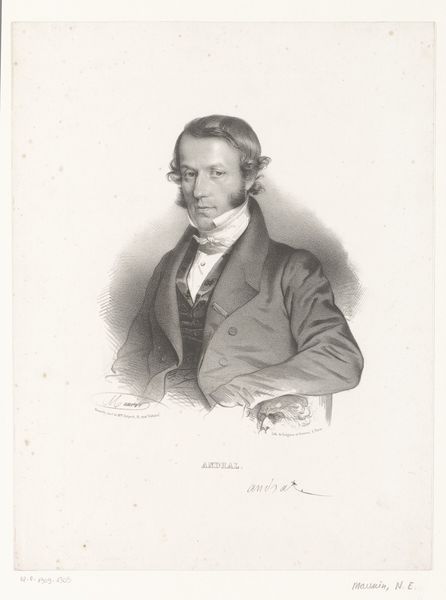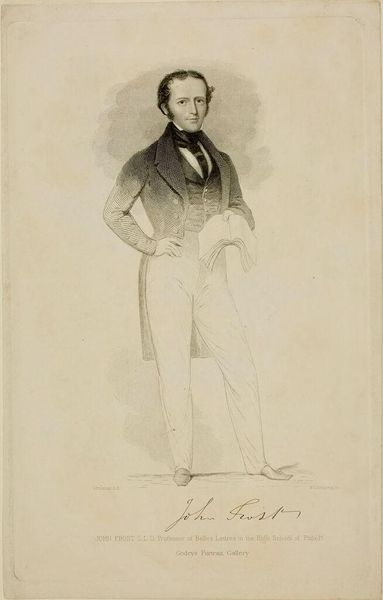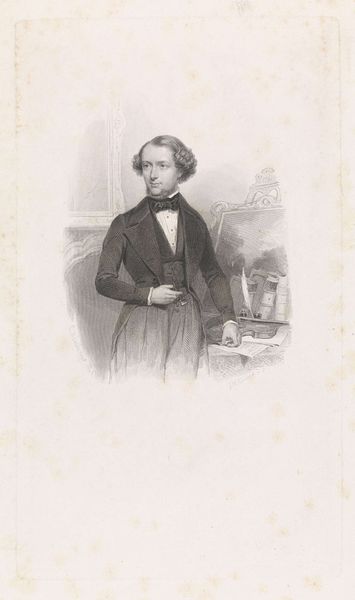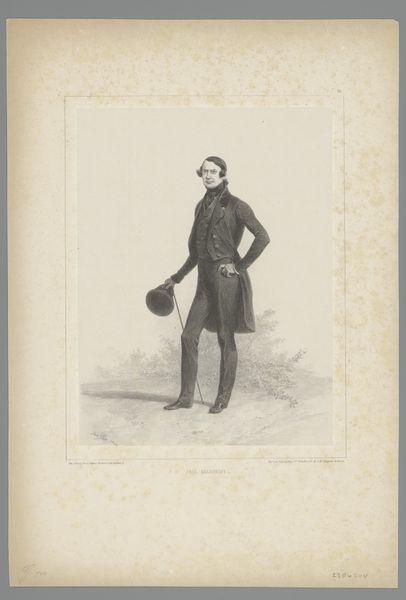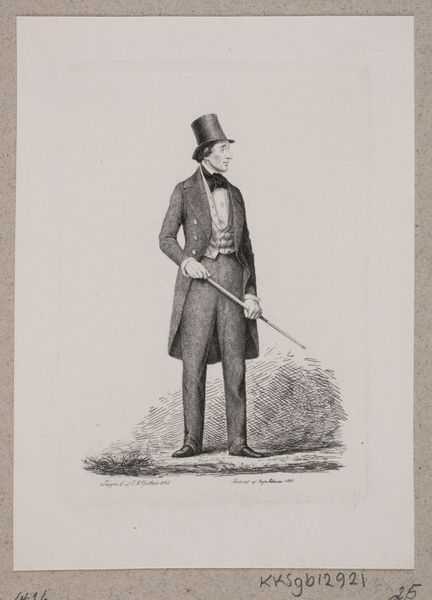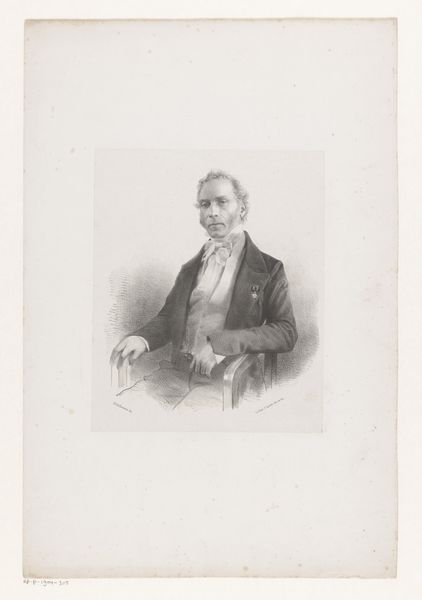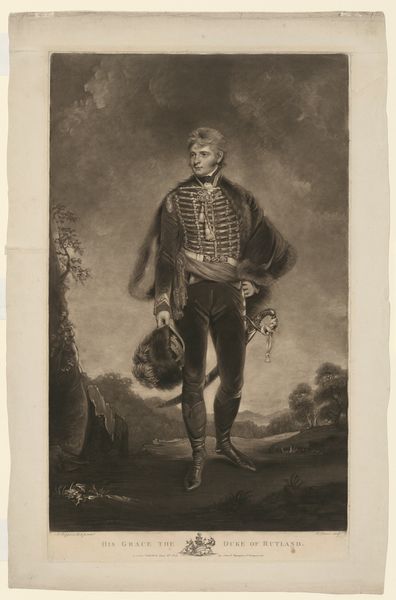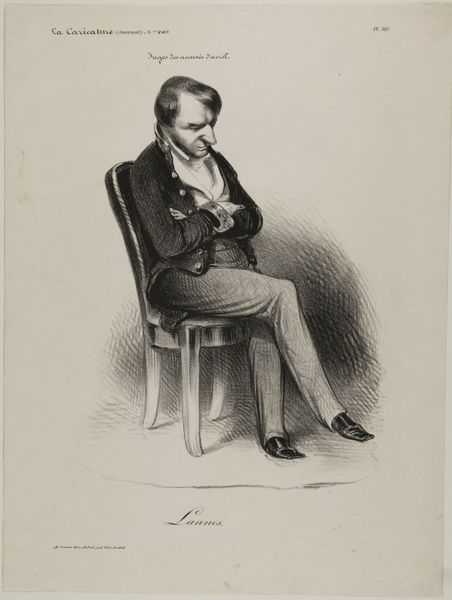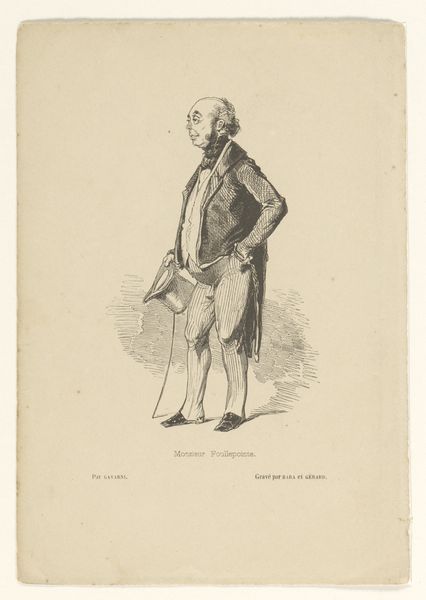
print, engraving
#
portrait
# print
#
pencil sketch
#
romanticism
#
watercolour illustration
#
genre-painting
#
engraving
Dimensions: height 304 mm, width 226 mm
Copyright: Rijks Museum: Open Domain
Curator: This print, dating from about 1835-1840, is titled "Costume de bal d'humann." The artist is currently unknown. It's held here at the Rijksmuseum and rendered through engraving. Editor: My initial impression is that there’s a fragility to this image. The fine lines, the man’s pose – he seems both self-assured and vulnerable. Curator: The "Costume de bal" translates to "Ball Costume." Consider the era. What do you suppose a man’s formal dress communicates about the shifting landscapes of 19th century masculinity, gender and class? Editor: Visually, it speaks to the language of tailoring—the tight breeches, the emphasis on the waist and chest. This aesthetic harks back to earlier eras while suggesting evolving symbols. This portrait makes me consider fashion's dialogue. The dress could tell an elaborate story about gender, performance, and status. Curator: Absolutely, dress in that epoch was deeply entwined with societal codes and visual messages. It represented entrance into privileged spaces while broadcasting your status to everyone else. Editor: And there's a real performative aspect as well. Think about the exaggerated posture and meticulous details; his bearing speaks volumes. Even though his coat signifies power and confidence, there's also that ruffled cravat – quite delicate. Is this then also communicating more subtle details beyond power and position? Curator: Precisely. The cravat whispers of a changing ideal, an emerging romantic sensitivity perhaps. But in the broader view, who gets to have a “sensitive” side and who has access to such elite balls in the first place? This piece begs us to see it as part of a greater socioeconomic landscape. Editor: These are indeed questions we should all keep in mind. Looking closer, I really see more of that era. The print isn’t just a portrait but an icon of aspiration. Curator: True—viewing it from today can provide invaluable insights when we interrogate what’s communicated between representation, society, and identity.
Comments
No comments
Be the first to comment and join the conversation on the ultimate creative platform.
